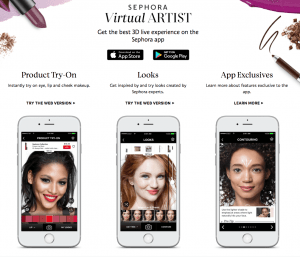Feb
2021
The History and Evolution of Digital Marketing – Present – Final Part
Hello, and welcome back everyone! This week, I will be discussing the final part of the history and evolution of digital marketing in the late 2000’s.
Digital marketing has been continuing to grow, and it seems like the evolution will not stop here. Today, more than 4.5 billion people use the internet out of which 3.8 billion are social media users worldwide.
Social Media:
A large number of 54% of people use social media to learn more about products and brands. When it comes to online shopping and eCommerce, their users are growing by the day.
Facebook remains the world’s most widely used social platform with over 2.45 billion active users. When it comes to digital marketing, Facebook has around 3 million businesses actively advertise on their platform.
Facebook came out with Facebook chat in 2008 to connect users of the platform with one another. In 2011, Messenger, an instant messaging service owned by Facebook, replaced Facebook Chat. The key difference is that users do not need a Facebook account to use Messenger. While the two are partially connected when owning have a Facebook account, it is not required to have a Facebook in order to use Messenger.
Facebook Messenger
Analytics & Personalization:
Marketing analytics is used to measure and analyze marketing performance in order to maximize efficiency, adjust strategies, understand what is working versus what is not, create goals, improve ROI, and so on. It allows marketers to view their marketing efforts and make better use of their budget.
Google Analytics:
Google Analytics was launched in 2005. It is a web analytics service offered by Google that tracks and reports website traffic in order to analyze in-depth detail about the visitors. This product is free to all users to maximize website’s performance.
For example, bounce rate is one of the most important metrics which refers to the percentage of visitors who leave the website after visiting only one page. This could be because visitors coming into the website are not finding what they are searching for, leading to a high bounce rate. Google Analytics provides a detailed report of the pages that are experiencing a high bounce rate. Therefore, a report on bounce rate will allow marketers to refine their strategies, such as content creation, with their websites (Thakur, 2017).
Google Analytics
A company that does a great job implement marketing analytics to their brand strategy is Sephora. For those who are unaware what Sephora is, it is a multinational chain with beauty and personal care products. Sephora does a great job at delivering a digital personalized one on one experience to its customers. “One of Sephora’s key goals is to focus on creating a quality experience for each individual shopper whether on the web, on mobile or in-store (Honigham, 2020).” They truly try to understand their customers better in order to tailor products that meet their specific goals. Sephora obtains user data in order to cater to each individual need. According to Honigham, Sephora began using Google Analytics 360 Suite to its marketing efforts. They wanted to gain in depth understand of their customer’s buying behavior and purchase journey in addition to refining their digital marketing efforts (Honigham, 2020).
Sephora strives to deeply understand their analytics data in order to view which stage of the buyer’s journey their potential customer is at and “identify any barriers to purchase and how to remedy it (Honigham, 2020).” One way Sephora gathers their users information is by analyzing the actions they take on the Sephora website. By viewing the choices a shopper makes, keywords from the search bar, saved items, page sessions, and engagement, the brand is able to design a more personalized experience for their users.
As skin-care junkie, I personally shop for skin-care products from almost every month. I have oily acne-prone skin, therefore, all the searches I insert on the page are related to my specific skin type. Based on my previous searches and purchases, Sephora suggests similar products that “I may like” or “recently viewed.” By instilling a “news for you” feed on their page, specifically tailored and customized for me, I encounter a pleasant and positive experience each time. Obtaining and analyzing user data to create a personalized experience is a huge advantage, and drives great success for the brand overall.
Virtual Artist Application
Boosting customer relationships and improving customer lifetime value should always be the main use of marketing analytics. Sephora’s strategy of gaining an in-depth understanding of their customer’s buyer behavior fits this model perfectly.
References:
Honigman, B. (2020, February). How Sephora Integrates Retail & Digital Marketing Strategy. Retrieved from https://etailwest.wbresearch.com/how-sephora-integrates-retail-online-marketing
Thakur, D. (2017, February). 10 good reasons why you should use Google Analytics. Retrieved from https://dineshsem.medium.com/10-good-reasons-why-you-should-use-google-analytics-699f10194834
Venkatesan, R., Farris, P., & Wilcox, R. T. (2015). Cutting-edge marketing analytics: Real-world cases and data sets for hands-on learning. Upper Saddle River, NJ: Pearson Education.


